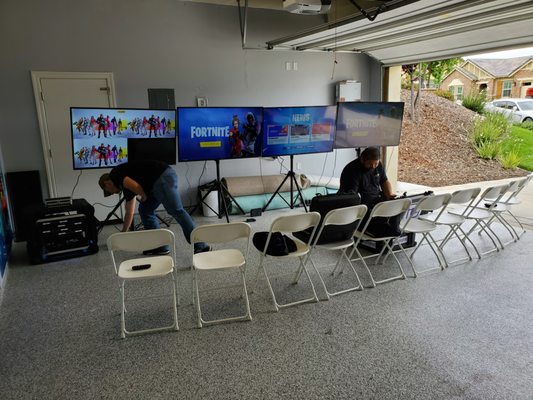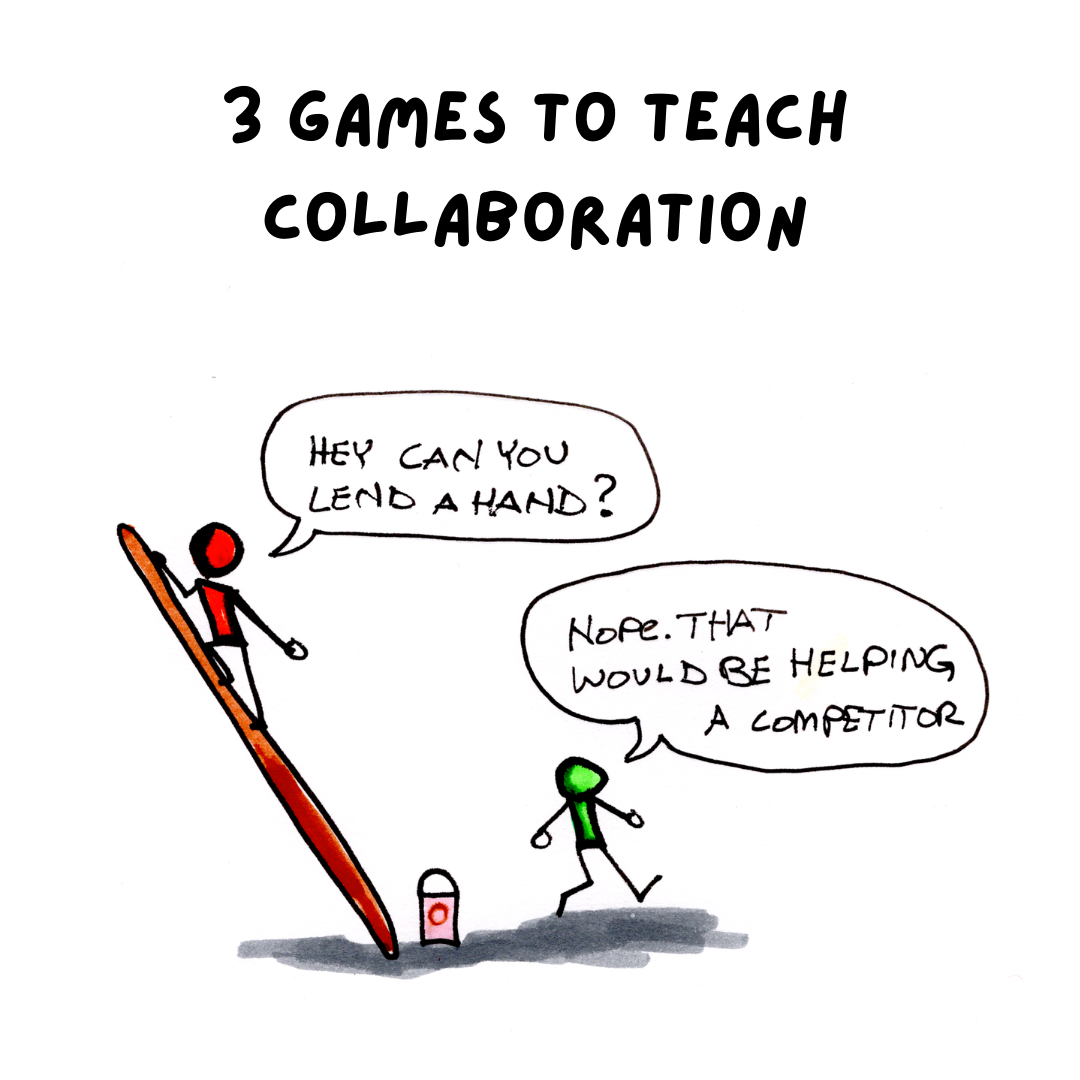Author: Scott Novis
Buckle Up! GameTruck Goes to Camp.
It feels good to get out. And while I don’t have any hard and fast numbers, on a recent trip to the airport, I can see that a good number of people are also feeling “free to move about the country.” There is of course, one caveat to that. Summer Camps. For a long time, summer camp was where working parents dropped off their kids, and they could experience fun, hands on programming and field trips. This year however, the loss of field trips has created a gap for many summer camps. It can be challenging enough to provide enough programming to fill a week but losing field trips has only made a challenging business even more challenging.

GameTruck @CAMP
This is where GameTruck and our GameTruck @Home program have really been a bright spot for camps and summer programs. Perhaps I should call it GameTruck @Camp! With students being kept on sight for safety reasons and to allay health concerns, GameTruck has been called upon more than ever to provide that much needed spark of interactive engagement.
Here is what Miss Figs had to say about arranging GameTruck for her students:
Wow! What an amazing experience for our students. We had 2 weeks to plan for an end-of-year party. I called around and GameTruck promptly responded. No wait time which is crucial due to the amount of paperwork required. We booked, the owner sent the paperwork, and we were able to get approval at the last minute! This was exactly what we needed! Prompt, courteous service. On the day of the event, it was pouring outside. I asked the GameTruck staff if they could move the truck AFTER they had already set up to give the students coverage as they waited in line and the coaches moved with no complaints. The students had so much fun and not one complaint from the students. Bravo! Job well done. Made our last minute event a success!
Camps are Different from Birthday Parties
Providing services for organizations and businesses is often completely different from providing events for birthday parties. Believe it or not, the relationship of the group often affects the perceived experience of the party. Birthdays? They happen with family and close friends. The birthday VIP is treated… well like the very important person they are. This is inherently unfair! But we like it that way for a birthday celebration because it is a form of recognition and respect to let the birthday child pick their games, sit where they want, basically be treated like a King or Queen. If everyone has a great loud raucous time all the better!
However, for schools, camps, churches, the dynamic is different in important ways. First, communication and organization is important. Second, fairness, everyone getting an equal turn is a high priority. Third, game selection is largely not up to the players, but must be reviewed and approved by the host. Games are set up maximize player participation and to be inclusive.
This is one reason our Game Coaches make such an important difference. They understand how important a smooth-running operation is. They have the experience to know what games kids will love to play, and they can move players in and out of the games quickly and efficiently. What’s more, as in the example above, they are accustomed to going the extra mile to make an important event work for the clients.
In addition to the traditional video game trailer, GameTruck also offers video game systems that can be brought inside and setup. The Nintendo Switch is especially popular. This enables kids to rotate through a “game room” and play and have fun with minimal line up and transition time. What’s more our staff are present to help get players into games and have a great time.

Conclusion Takeaway
GameTruck has spent more than 15 years learning how to create amazing events that engage and entertain players of all ages. While our signature birthday parties are legendary, we also provide awesome services to Summer Camps, Schools, and Churches. These events are managed with the same care and dedication that we pay to birthdays. The player dynamics are different, and the games available to them are different. We do a lot of work for organizers who care deeply about kids but know very little about video games. Our goal is to make the organizer who said yes to video games look like a hero. This starts by knowing what the kids will play that also meets the hosting organizations guidelines.
If you’re looking for something fun and engaging to fill the holes in your summer camp lineup, give us a call, GameTruck can help.
Our Top Tips For Summer Video Game Parties
As schools are letting out around the country, and temperatures continue to climb, parents are looking for ways to keep their kids and their friends entertained this summer. Here are three tips from a decade and a half of summer party fun.

Tip 1: Set-up in the Garage

GameTruck is climate controlled so it can host the kids. By setting up a folding table, some chairs, and a cooler full of drinks, the kids rarely if ever need to go into the house. This keeps your doors closed while the air-conditioning is on.
Kid can cool off in the truck while playing with friends, run out and grab a drink or a snack and then head back into the truck.
When the party is over, they can do cake and presents and voila, you have just had a successful party and no one was in your house!
Tip 2: Party After Dark

It can get hot during the day, but when the sun goes down, and the night breeze cools everything off, GameTruck is a great option. Outdoor screens make it even more fun as they now can shine their colors the brightest creating a dance party outside and a competition fiesta inside the truck. With no school the next day, virtually any day of the week can be a great night to hold a party. You can even kick off a slumber party with a GameTruck evening event.
Tip 3: Have An Unbirthday

Summer is a great time of the year to celebrate those birthdays that fall right on, or in the shadow of other holidays.
Pick a date and have an “un-birthday” a chance to get together with friends. You can even theme it, challenging the kids to a kind of cosplay – think Halloween in July with prizes for the best costume.
You might even pick the theme around what you know the kids will have the most fun dressing up as (Star Wars, Madden, Smash, Minecraft).
The more invested the kids the more memorable the experience.
Conclusion and Takeaways

Along with the heat, long days, and time out of school, summer brings a chance to think about things differently. Always make sure you have plenty of water and drinks for the kids. In Arizona we always had ice towels in a cooler for our kids and I hung up a 5-gallon orange drink cooler on the fence with bungies and put a 1-gallon solid block of ice inside. I filled the rest with water at the water store. Kids could pull a splash of ice-cold water whenever they wanted without getting their mouths on it. It lasted nearly all day.
The great thing about summer is that you can have parties you could never have in the winter, at times you might not think about having a celebration.
Do you have a novel summer idea? Did you have one you want to share with others? Let me know! I’d love to hear from you.
How Video Games Help Expand Childhood Friendships
When I read Robert Bly’s book, Iron John, I was stunned by the observation he makes about modern male relationships. I have mentioned this before.
Contemporary business life allows competitive relationships only, in which the major emotions are anxiety, tension, loneliness, rivalry, and fear.

While boys experience a natural pressure and desire for competition, they are not alone in this societal pressure to “win”. I personally believe we can do a better job of educating our children that there are more kinds of relationships than only competitive ones. As parents, what can we do about it? I believe video games can help.
Why do I believe this? Two words: Co Op games.
These are games where players are challenged to work together to achieve a common goal or objective. These are games where players have to work together, as if they were on the same team. This latest generation of games go way beyond the Halo co-op mode where two players are essentially playing the same game side by side. In this genre of games, the cooperation is integral to the overall game experience. In short, you can’t really play the game without someone else. Single player just doesn’t make sense
Game play is important for the social and emotional development of all humans.[1] What’s more, play is where we discover the boundaries of our capability and the edge of where our individuality intersects with others and society.[2] We all know the expression, It’s not whether you win or lose, it is how you play the game. And in our modern, “win at all costs” culture where winning has become “the only thing”, we lose sight of the META game, the game above that game. This is not only to win, but to play so that you will be invited to play again with others.[3]
Using multiple player cooperative games, a chance for gamers to learn how to play together in ways besides direct head to head competition. I like these games because they are ideal games for parents to play with their kids or together as a family. In the footnote there is a great article by the website Gamerant that lists 12 awesome games[4], my personal favorites are:
Only Snippers Clips is exclusive to the Nintendo Switch, but the other two games are available on practically whatever gaming system you already own including: PlayStation 4, Xbox One, and MS Windows.
Snipper Clips

Exclusive to the Nintendo Switch, Snipper clips is a brilliant puzzle-based game that stimulates creative thinking. It contains all the polish and fun you expect from a Nintendo first party title. In a nutshell, players play as two (three or four) paper shapes that match the shape of their Nintendo JoyCon controller. To solve puzzles, they often must “snip” or “clip” each other, changing their shape to fit a pattern displayed on the screen. Players work together, solving these puzzles. Puzzles can also include physics objects like bouncing balls and climbing on top of each other to reach different parts of the level map. I find the game is best played on a big screen TV on the couch. I played it for hours with my daughter when it first came out. It was great time we spent together, and I used it to talk about game and puzzle design. I also took a back seat to let her guide me and give me directions in solving the puzzles. I used those times to share with her what would make it easier for me to follow her directions. Giving more young women a chance to successfully lead men in collaborative and cooperative tasks is also an area where we could help our children build a better future.
Tools Up!

This zany independent game by The Knights of Unity and published All In Games has a bit of jiggly humor and multiplayer messy fun. With this game you play a bouncy handyperson who must move around a house in a limited amount of time to remodel, repair, and revamp apartments and homes. What makes this game a little different is that you can easily make mistakes that you have to clean up which can cost you time. Don’t clean up that spilled paint? And you find your character slipping and sliding around the floor like a slap stick character from a black and white movie. The controls can take some getting used to (I often found myself pressing pick up when I meant interact, and interact when I mean to pick up), but after a found of the training rounds this kind of trivial learning curve goes away. What really makes this game interesting to me are the PLANS. You can hold them up and the game will show you what the level is supposed to look like. Then you have to go about doing it. Again, assigning roles, communicating, and forgiving each other for making mistakes is the name of the game.
Overcooked 2

My favorite of this genre has to be Overcooked 2. I first saw this game at the Nintendo booth at E3. I thought, a cooking game? Seriously. And the answer is YES, seriously. The nature of this game is that everyone plays a chef in a fast paced kitchen. Any chef can do any task, but no chef can do every task. You must work together to complete orders in a timely fashion. The progression is simple and the replay value for each level is nearly additive in itself. In fact, we use Overcooked 2 as part of a leadership and development program we call Culture Kitchen. There is nothing quite like seeing people work together in real time to understand the obstacles that get in the way of working together. What’s more, if you haven’t heard a room full of adults laughing out loud together at the same time while they work together, you are missing out.
Conclusions Takeaways
What I like best about these kinds of games is that they inspire you to beat your own score, not someone else’s. Though successive rounds you can learn to work together better, communicate more effectively, and explore the types of relationships that go beyond competitive, they go to collaboration and cooperation. These games make you feel good when you set a record because everyone did it together. These games all fall on the affordable end of the spectrum with Snipper Clips costing $41.08, Tools Up! has a free demo but costs $19.99 on Steam and Overcooked comes in at a very reasonable $24.99 on most platforms at the time of this writing (with Overcooked All You Can Eat – the complete library worth it for $39.99). I would encourage you to check out this genre of game and sit down with your family and give it a go. It’s amazing what you can learn about, and from each other when you work together.
—
References
- Jun, P. & M.D. (2019, May 23). The Importance Of Play: An Interview with Dr. Jaak Panksepp » Brain World. Brain World. https://brainworldmagazine.com/the-importance-of-play-an-interview-with-dr-jaak-panksepp/
- Warren Farrell, P., & John Gray, P. (2018). The Boy Crisis: Why Our Boys Are Struggling and What We Can Do About It. BenBella Books.
- Peterson, J. B. (2021). Beyond Order: 12 More Rules for Life. Portfolio.
https://gamerant.com/great-multitasking-games-like-overcooked/




